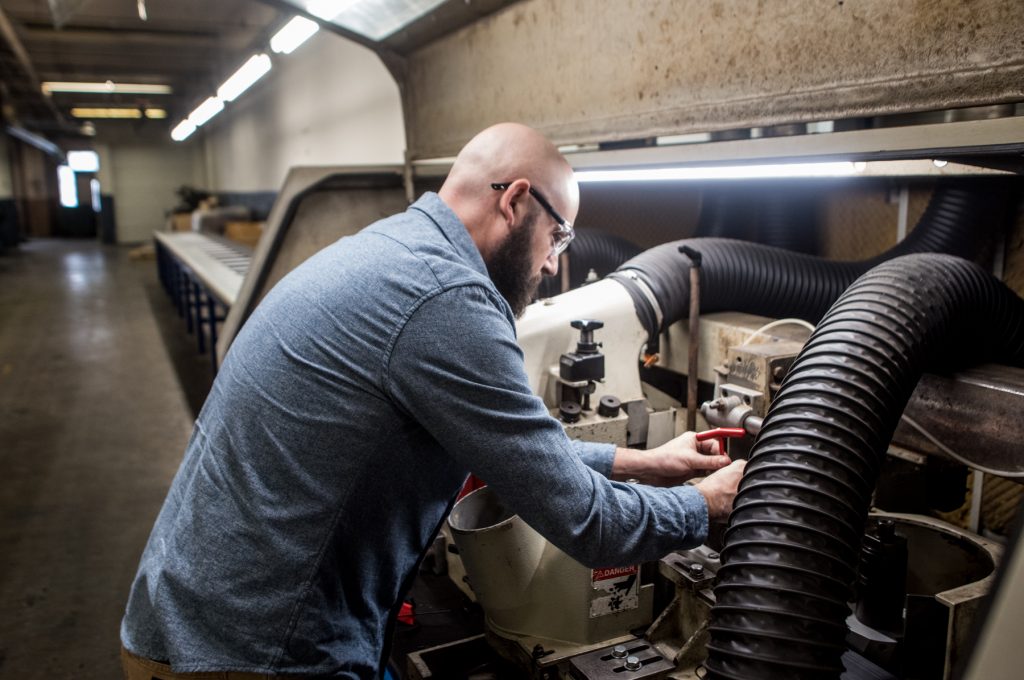A major off-line linerboard coater wanted to optimize their coating operation, but they had concerns about the time it would take to do rod trials and test many different thread shapes and sizes to determine the best thread.
Here’s how Buschman developed customized segmented rods to help this company optimize their metering rod thread profile and size.
Segmented Rods Help Off-line Coater Optimize Coating Operation
To reduce the time and cost of rod trials, the coating company turned to the metering rod experts at Buschman.
Buschman supplied six-zone segmented rods for the trials, allowing the customer to test six different profiles and sizes with a single run. A rod trial that could have cost days of production time was reduced to hours.
The end result? Buschman developed a rod profile and size that ended up saving the customer 25% of their coating (around $200,000USD/year), increasing rod life by 67%, and providing a more smooth and uniform coating than achieved with the rods they had been using.
The reduction in coating also decreased drying energy requirements, providing additional savings to the customer.
How Segmented Rods Can Reduce Rod Trial Time and Cost
When transitioning from wire-wound rods to rollformed rods, changing coat weights, or even when optimizing your current rollformed rods for your application, there’s usually no way to get around performing trials to determine the right thread size and shape. No two coating applications are exactly alike and what works for one coating line is not likely to work for another.
These trials can be costly in both time and materials. Proper trials are often cut short due to time, costs, and production demands before the optimal thread is found but when the result is “good enough.”
Unfortunately, the long-term costs of the wrong grooved rod can far exceed the cost of trials. In order to reduce trial time and maximize the benefit of the trials, Buschman has developed the OptiZone™ Segmented Rod.
A Segmented Rod is a rollformed metering rod that has multiple thread shapes and/or sizes rolled into a single rod manufactured to the same dimensional specifications as the rods you are using today. When using a segmented rod, the substrate being coated will have multiple zones corresponding to the different segments on the rod.
Instead of having to run multiple rod trials, a single trial can be run to determine the optimum thread size and shape.
Figure 1 shows an example of a segmented rod with three different profiles:
- Profile A would be expected to provide the best coating coverage for very high viscosity coatings but would also be expected to wear faster than the other profiles due to its low crest/lead ratio.
- Profile B would be expected to provide good coating coverage for medium to high viscosity coatings and would have better wear characteristics than Profile A due to a moderate crest/lead ratio.
- Profile C would only provide smooth and uniform coverage on low viscosity coatings but would have superior wear characteristics compared to the other profiles due to its high crest/lead ratio.

The maximum number of zones that can be tested on a single rod is determined by your web width. Each zone, which includes a blank area between zones, should be a minimum of approximately 300mm.
One zone nearest either end of the rod is usually made 10-20% wider than the rest of the zones. This is done so zones can be easily identified after the rod and or substrate have been removed from the machine.
How a Segmented Rod Trial is Performed
- Determine Trial Objectives
Before any trial is run, it’s important to pre-define success and determine trial objectives. Buschman’s team of metering rod experts will work with you to analyze your key application parameters and determine what improvements may be feasible.
Some examples of objectives that have been achieved using segmented rod trials include:
- Reduce coating consumption while maintaining coating quality and opacity;
- Increase line speed by reducing drying time;
- Increase coating quality and uniformity;
- Increase rod life.
- Develop a Trial Plan
Once specific trial objectives are determined, a trial plan is created. The trial plan clearly defines the following:
- Application parameters that will be in place during the trial;
- Metrics that will be used to measure success against the trial objectives;
- Specific thread shapes and profiles to be provided on the segmented rod.
- Perform the Trial
Trials are performed in accordance with the trial plan.
- Analyze Results
The characteristics of each coating zone are measured in accordance with the trial plan and compared to the trial objectives. Based on these findings the optimal thread profile and size is determined.

